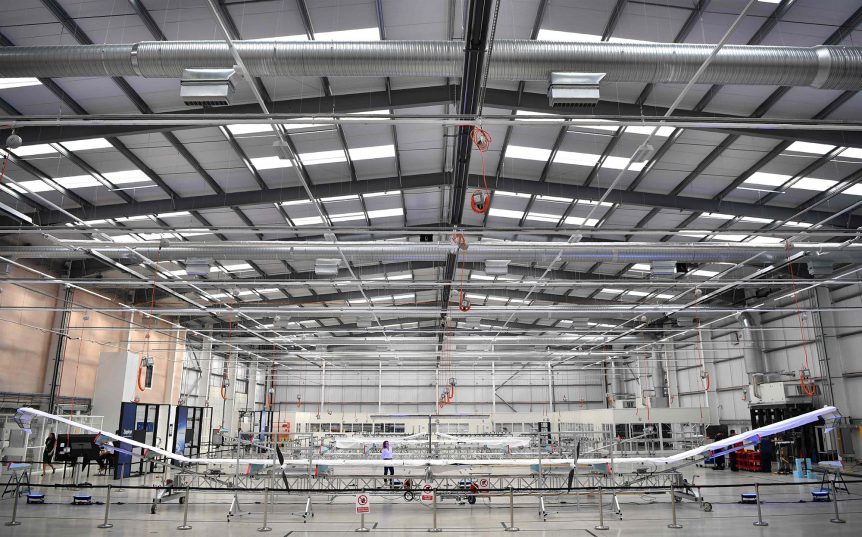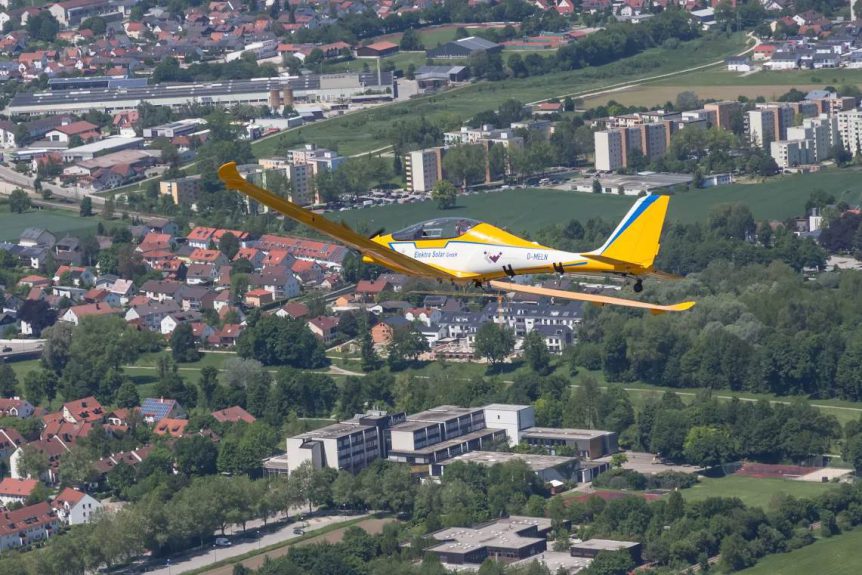Flying high and down under, Amprius, the San Francisco Bay area-based battery developer and maker, announced 450-Watt-hour per kilogram cells, and seemingly immediately secured orders from three major clients. One client of the three is a British specialist in HAPS (High Altitude Pseudo Satellite) aircraft. A probably unrelated sale went to an Australian light plane maker unveiling the country’s “first commercially produced electric aircraft,” a two-seat trainer. BAE/Prismatic BAE Systems has collaborated with Prismatic, a HAPS pioneer, in the development of solar-powered unmanned aerial vehicles (UAVs). The partners have crafted two prototypes of the PHASA-35 unpiloted aerial vehicle, a 35 meter (114.8 feet) span airplane weighing 150 kilograms (330 pounds) capable of carrying a 15 kilogram (33 pound) payload. Solar cells power the craft’s electric motors during the day and charge the Amprius batteries that keep it in the air at night. Amprius claims, “The new 450 Wh/kg cells are the only known commercially available batteries of their kind that …
Zephyr Breaks Its Own Record – Again
The Royal Aeronautical Society, official record keeper for such things, announced in an August 8 press release, “Taking off from Arizona, US on 11 July, Airbus Defense’s solar-powered UAV (unpiloted aerial vehicle), the British-built Zephyr S, has smashed the existing endurance record for unrefueled, unmanned flight by staying aloft for 25 days, 23 hours and 57 minutes. This, the maiden flight of the production Zephyr S HAPS (high altitude pseudo satellite) for the UK MoD (United Kingdom Ministry of Defense), once verified, almost doubles the existing endurance flight record of 14 days, 22 minutes for UAVs, set by a previous Zephyr prototype in 2010. The solar-powered Zephyr UAV, which weighs less than 75 [kilograms – 165 pounds], flies at 70,000ft, above air traffic and weather, to provide a new class of platform for persistent surveillance, observation, communications relay or connectivity for military or commercial customers. Airbus said that the maiden flight saw test objectives met with further flights planned in …
Look Up and Say Cheese! Autonomous Mapping from the Elektra One Solar
Had the residents of Landshut, a 13th-century city in Lower Bavaria, chanced to look up at the right time over the last few weeks, they might have glimpsed a bright yellow shape looking back at them. Calin Gologan’s latest Elektra One Solar carries a suite of cameras that can transmit 2D movies in 4K resolution to a ground station up to 40 kilometers (25 miles) away. Through sophisticated software, the images can be translated into 3D maps with a resolution of five centimeters (just under two inches), the primary mission of the flights. Partner ViaLight, a 2009 spin-off of the DLR (the German Aerospace Center), provided the hardware and software that allows up to 100 Gbps (gigabits per second) data transmission speed, and thus enables such high resolution for the aerial images. The system can also transmit “Big Data,” using the high-speed optical links. According to Elektra Solar GmbH, a merger of the companies PC-Aero GmbH and Elektra UAS GmbH, …



